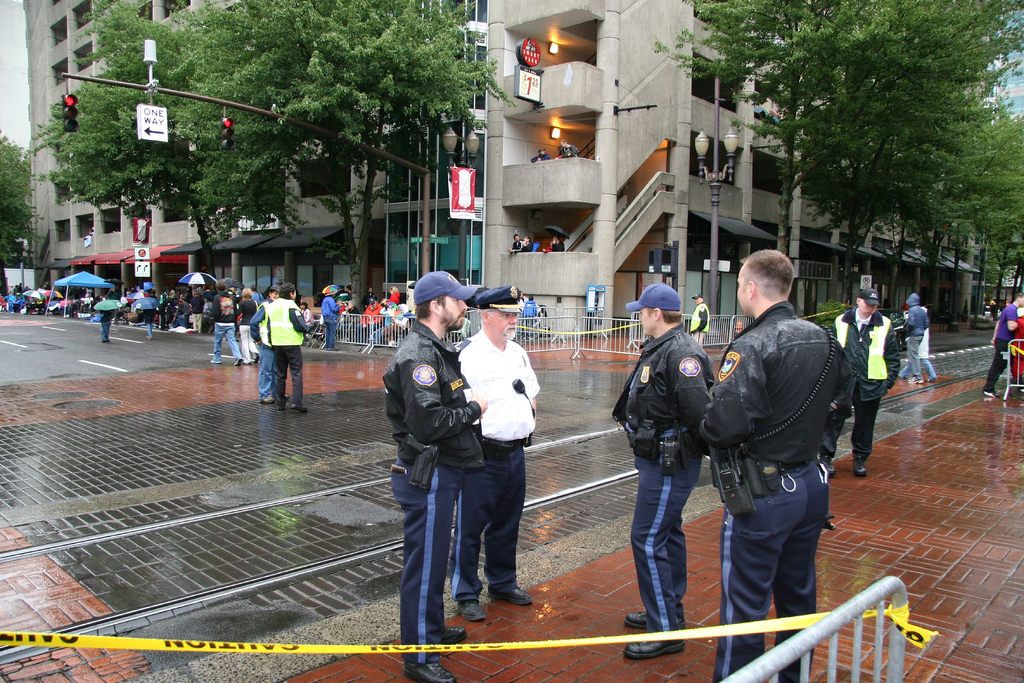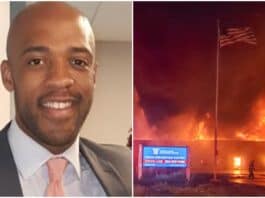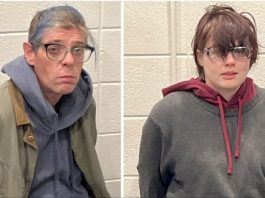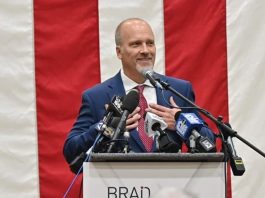By Chris Mann
An In-Depth Review of The 2020 Portland Riots: A Fight Against Domestic Terrorism by Tommy Clark. This summary is the second in a series of several reviews of books from the “Riot Reading List,” written from different personal perspectives but all from the front line of the 2020 protests.
Riot: “A violent public disorder specifically: a tumultuous disturbance of the public peace by three or more persons assembled together and acting with a common intent” or “public violence, tumult, or disorder.”
Terrorism: “The systematic use of terror especially as a means of coercion.”
Police force: “A body of trained officers entrusted by a government with maintenance of public peace and order, enforcement of laws, and prevention and detection of crime.”
-Merriam-Webster.com
Accompany Police Officer Tommy Clark on the streets of Portland in 2020 when Rose City became Riot City. This book offers a gritty, behind-the-scenes look into the protracted months of riots, which culminated for Officer Clark when political pressure sidelined him to a desk job based on a viral video. Candid in its delivery, it’s unfiltered and straightforward.
Officer Clark opens his memoir with a dedication to his fellow law enforcement brothers and sisters, thanking them for “dedicated service to protect people…regardless of race, religion or color.”
Tommy immigrated from the Philippines with his parents when he was eleven years old and enlisted in the army when he was nineteen, later joining the Portland Police Bureau (PPB). After his father died, he built a house which he shared with his mother until he could build her a guest house. He returned home in early 2020 after being deployed to Saudi Arabia where he had been responsible for training security forces, such training being critical to managing the massive annual pilgrimages to Mecca. Soon he would be forced to confront a different kind of conflict than the military ever demanded of him. The opponents were his fellow citizens, the stage was his hometown and it would require fortitude and stamina.
Shortly after Tommy returned to the PPB, extensive rioting began in Minneapolis, Minnesota. Given Portland’s history of tolerating riots and the controversy surrounding George Floyd’s death, the PPB anticipated the need to confront significant rioting in Portland. But Portland policing had changed since Tommy left. Police could no longer chase suspected criminals or stolen cars, unless attached to a “person-to-person crime”. Tommy had a knack for memorizing the plates of stolen cars and was often able to recover three in a shift but he would no longer be able to do that. Other proactive police initiatives, such as the Gun Violence Reduction Team, were dismantled by city leadership. Where the police used to show up at a scene and find a few shell casings, they would now find 30 or more.
The riots tended to start nightly after dark at the Justice Center that houses PPB, and began with a barrage of rocks, water bottles, fireworks, mortars or IED’s (improvised explosive devices) being thrown relentlessly at officers. Other tactics included flashing lasers in the cops’ eyes to blind them or throwing balloons filled with urine or feces at them. Police officers weren’t permitted to respond to the attacks until leadership, known as Incident Command, declared the actions to be a riot. The declaration typically occurred only after some time had passed, as long as thirty minutes after the first projectile was thrown at officers.
After being pushed back from the Justice Center, the rioters often ran through the streets, breaking windows, starting fires and looting. They became better organized and prepared, and more hostile over time. Like a warped weather barometer, there was even a Portland riot chart by date and location, with a legend showing the number of arrests and the types of infractions.*
While the violent side of the protests manifested itself at night, officers often engaged in proactive mitigation in the daylight such as search-and-destroy missions for riot supplies and projectiles. Officer Clark once found a stash of five 64 ounce bottles of charcoal lighter fluid hidden in a grill at a park which was likely not being stored for a festive family picnic.
In addition to physical attacks, the officers were frequently subject to verbal threats and abuse, such as those made by a woman Tommy likened to the demon-possessed character played by Linda Blair in The Exorcist. Portland’s Linda Blair clone hurled hate-filled insults and obscenities at Officer Clark which prompted him to tell her that he would pray for her. In a broad-reaching personal rebuke, she told him to F his religion, his God AND himself. The hostility and violence against the out-numbered officers was so pronounced that they found it necessary to employ evasive tactics to avoid being followed home when they left work.
By August, many businesses were closed and boarded up. Most arrests of rioters were not prosecuted by the district attorney, and one city official accused police of starting the fires themselves in order to justify their treatment of people. When Tommy’s precinct was under siege by rioters in a scenario not dissimilar to what happened to the Minneapolis Third Precinct, the decision makers’ strategy was to stand down. They believed that would de-escalate the violence but in reality, it seemed to embolden the rioters and make the officers sitting ducks ready to be succumbed in a burning building. Incident Command let things play out for a protracted amount of time, perhaps longer than thirty minutes, even prohibiting an officer from using a hose to put out a fire at the precinct doorstep or from pepper spraying those who were stoking the fire, repeatedly stating “We’re not there yet”. Eventually, and after officer tensions were high, Incident Command declared a riot and officers were allowed to defend themselves and the precinct.
Rumors were that other agencies no longer wanted to assist PPB for fear of prosecution by the district attorney if they were put in an unavoidable situation of employing force against rioters. In 2021, all members of the fifty person Rapid Response Team, a specialized team trained to manage crowds, resigned from their roles after a team member was indicted for assault. Officer Clark found the leadership model to be upside down from his military experience where leaders were held accountable for the actions of their subordinates rather than the other way around.
It becomes apparent as one progresses through the account that 2020 was a long, exhausting period for law enforcement in Portland. Night after night of the same clashes, trying to keep a lid on a boiling pot with limited resources and support, and long hours. They were exhausted physically and emotionally, and many were suffering from injuries.
Late in the summer, during a protest declared to be a riot, and after those present were told to disperse, Tommy confronted a man he believed was planning to attack him. The protestor-cum-riot-medic tried to take him down. Tommy tackled him and the riot medic was arrested for violating curfew.
As is often the case, the latter part of the encounter with the riot medic was recorded on a video that went viral and Officer Clark was sidelined to a desk job. Charges against the riot medic were dropped and he provided many inaccurate statements about the altercation and his injuries in his civil rights lawsuit against Clark. Frustrated in a desk job, and disappointed with the political response to the incident, Officer Clark eventually transferred out to an army position overseas. Ultimately he was exonerated of any wrongdoing and all charges against him were dropped.
Consistent with someone trained to document incidents, Tommy Clark efficiently condenses select experiences into this informative and highly readable book so you may accompany him on this Pacific Northwest expedition into perpetual disorder. Along with detailed close ups of the summer of 2020 in Portland, he identifies the leadership failures and political positions that he believes contributed to the violence and destruction, and what citizens can do to bring about “changes critical to the health and survival of our nation”. His book offers a rare, likely singular, look at this recent piece of history from a law enforcement perspective. In spite of the debilitating nature of that summer, Tommy found moments of humor and humanity in himself and others.
See the Q&A with the author for more information.
Chris Mann


![Mandela Barnes Said ‘Reducing Prison Populations is Now Sexy’ [VIDEO] Reducing Prison Populations is Now Sexy](https://www.wisconsinrightnow.com/wp-content/uploads/2022/09/Collage-Maker-14-Sep-2022-11.44-AM-265x198.jpg)







![Author Exposes the Tragic Realities of the 2020 Riots & the ‘Gaslighting of America’ [REVIEW] julio roses](https://www.wisconsinrightnow.com/wp-content/uploads/2025/11/MixCollage-21-Nov-2025-02-08-PM-8145-265x198.jpg)

